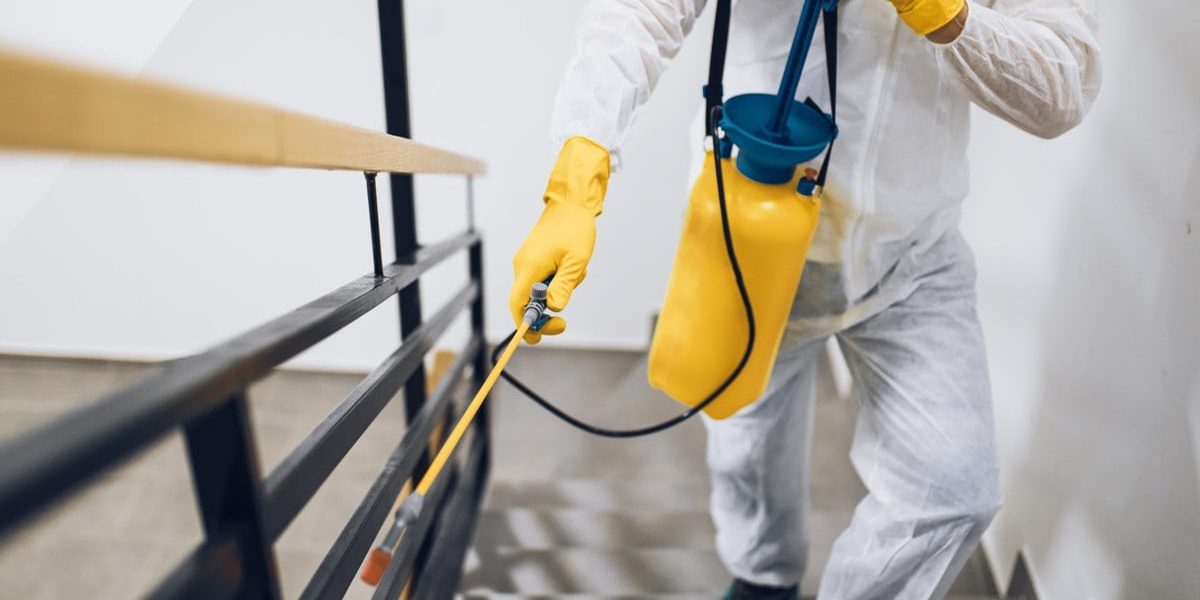Exterminator DC: Your Service for Pest-Free Staying In Washington DC!
Expert Parasite Control Techniques for Long-Term Results
Specialist pest control techniques envelop a comprehensive approach that starts with a thorough evaluation and analysis, complied with by accurate bug identification to recognize their behavior patterns. The execution of Integrated Pest Management (IPM) concepts, coupled with eco-conscious treatments, develops the cornerstone of sustainable bug obliteration.
Inspection and Evaluation
Upon getting in a residential or commercial property for insect control services, the first action is a thorough inspection and analysis to recognize the extent of the problem and determine the most efficient therapy strategy. Professional pest control service technicians are trained to diligently take a look at the properties, seeking indicators of pest task such as droppings, gnaw marks, nests, or any structural damages. They will certainly also analyze the conditions that might be bring in pests, such as food sources, water leaks, or access factors.

Parasite Recognition and Actions

Additionally, understanding the actions of the identified pest is vital to applying reliable control measures. Knowing where insects nest, what they feed on, and their activity patterns can help pest control experts create approaches to eliminate them effectively.
Integrated Bug Monitoring (IPM)
Integrated Parasite Administration (IPM) techniques integrate numerous methods to control and prevent pest problems in a sustainable and eco-friendly way. bed bug treatment. By integrating techniques such as organic control, habitat manipulation, alteration of cultural techniques, and the usage of resistant ranges, IPM aims to minimize the usage of chemical pesticides
Among the essential principles of IPM is the focus on avoidance. This aggressive technique entails tracking pest populaces routinely to identify any bug control services type of potential problems prior to they rise. By determining bug her latest blog problems early on, pest control actions can be executed swiftly and effectively.
In addition, IPM advertises the usage of non-toxic insect control methods whenever feasible. This can consist of employing all-natural killers of the parasites, introducing beneficial pests, or making use of scents to interrupt breeding patterns. By lowering reliance on chemical pesticides, IPM not only secures the setting but additionally aids maintain a balance in the community.
Environmentally-Friendly Therapies
Applying eco-conscious methods in bug control procedures can successfully attend to invasions while prioritizing ecological sustainability. Environmentally-friendly therapies focus on lessening the effect of pest control methods on environments, non-target organisms, and human health and wellness. These methods typically entail the use of natural predators, such as ladybugs or nematodes, to regulate pest populaces, reducing the requirement for chemical interventions. Furthermore, methods like habitat adjustment, such as adjusting wetness levels or removing food sources, can assist discourage insects without the usage of dangerous substances.
An additional trick aspect of environmentally-friendly treatments is making helpful site use of natural and naturally degradable products that damage down swiftly without leaving harmful residues in the atmosphere. Botanical pesticides stemmed from plants like chrysanthemums or neem use reliable insect control while positioning marginal threat to non-target varieties. Moreover, utilizing methods like heat treatments or scent traps can target specific insects with precision, lowering the overall environmental influence of bug control methods.
Ongoing Surveillance and Maintenance
Continuous monitoring and maintenance are necessary elements of effective parasite control management. Continuous tracking plays an important duty in making sure that insect infestations are identified very early and managed without delay. Routine examinations by skilled professionals are essential to identify any indications of insect task, assess the performance of previous treatments, and make adjustments to the bug control plan as needed. By checking insect populations with time, pest control experts can track fads, prepare for possible problems, and implement safety nets to reduce the danger of future problems.
Along with tracking, maintenance practices are important for long-term insect control success. This consists of implementing appropriate hygiene measures to get rid of possible food and water resources for insects, sealing access indicate avoid pests from going into the facilities, and attending to any type of structural issues that can facilitate pest invasions (pest control). By including ongoing surveillance and maintenance into an integrated parasite management technique, services can ensure a pest-free setting and guard their residential property against expensive damage and health and wellness threats
Final Thought
Finally, making use of specialist insect control methods such as extensive assessment and evaluation, precise pest recognition and understanding of their habits, integrated bug monitoring techniques, environmentally-friendly therapies, and recurring surveillance and maintenance are necessary for attaining long-lasting cause parasite control. By implementing these approaches, people can properly manage parasite invasions and keep a pest-free setting in a lasting fashion.